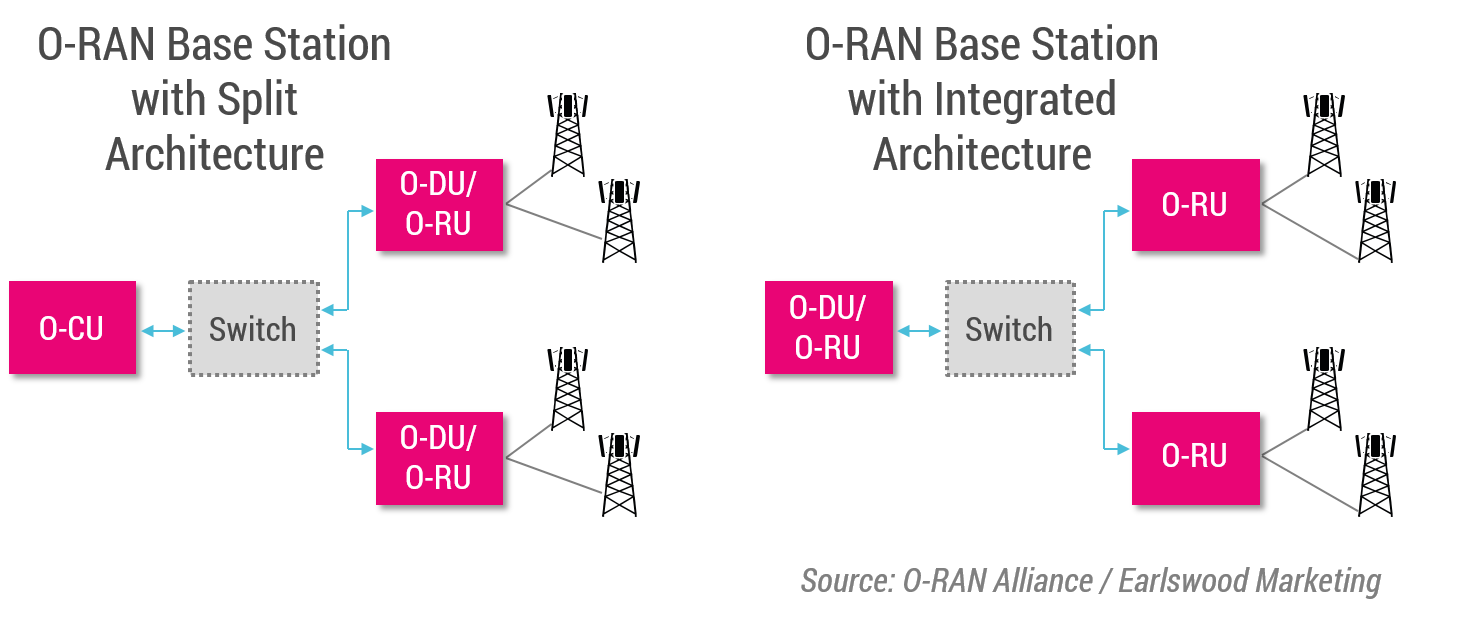Delivering on the Promise of Open RAN
Open RAN promises many things; disaggregation, virtualization, a wider ecosystem, less reliance on a small number of suppliers, multivendor interoperability, a greater role for white box systems, more cost effective and scalable solutions, faster time to deployment and integration opportunities with edge computing. In time, many of these will be delivered but there is still much to be done. We have seen the first RFIs for open RAN solutions and through groups like the O-RAN Alliance and TIP there are already agreed specifications and proofs of concept. The challenge now is to deliver solutions that deliver on these promises.
There have already been deployments that take an open RAN approach. During 2019 Rakuten deployed virtual Distributed Units (DU) into 4,000 edge sites in Japan. The company worked with four key suppliers to ensure that the cloud core, NFV infrastructure (NFVi), Open Stack based cloud operations and control software, and server hardware, all worked together and was able to deliver the performance needed for LTE. The RAN architecture used is designed to be upgradable to 5G. Rakuten is already working on a second-generation solution that will be more widely deployed.
Two groups that have been heavily involved in the development of open RAN solutions are the O-RAN Alliance and TIP (Telecom Infra Project). The O-RAN Alliance was founded in February 2018 by AT&T, China Mobile, Deutsche Telekom, NTT DoCoMo and Orange and is developing an extensive reference architecture for building virtualized RAN using open hardware with standardized interfaces to enable an open and interoperable supply chain ecosystem.
The O-RAN specification work is divided into technical work groups covering many topics including overall architecture, open mid haul and front haul interfaces, intelligent controller and AI interface, and white-box hardware and software architecture. In April 2019, O-RAN partnered with the Linux Foundation to set up the O-RAN Software Community to provide open software aligned with the O-RAN architecture. During the second half of 2019 the O-RAN Alliance completed the key O-RAN specifications and deployment scenarios.
The O-RAN specifications allow for multiple RAN architecture implementations and are guiding most open RAN solutions being planned or implemented. Two key O-RAN architectures are shown above. The integrated architecture has an O-RAN Centralized Unit (O-CU) connected through the 3GPP F1 interface (split option 2) to combined O-RAN Distributed Unit (O-DU) and O-RAN Radio Unit (O-RU). The split architecture has a combined O-CU/O-DU and separate O-RU connected through a front haul interface (split option 6,7-2 or 8). In both cases an optional switch that supports the necessary time synchronization can be used to optimize the use of physical links.
TIP was launched by Facebook in 2016 and now has more than 500 member organizations including operators and solution providers. The group is running a wide range of projects covering access, transport and services designed to drive the building of the telecom infrastructure of the future using open solutions. The Disaggregated Cell Site Gateway (DCSG) project completed in 2018 by the TIP Open Optical Packet Transport (OOPT) Group defines an open and disaggregated platform based on commercial off-the-shelf components that can replace proprietary routing appliance in 2G/3G/4G wireless deployments. At the TIP summit in November 2019 there were four different DCSG hardware platforms on display and Telefónica has announced that it will deploy this technology in its wireless network in Germany.
There are several TIP projects covering open and virtualized RAN solutions. The TIP OpenRAN Project Group is developing fully programmable RAN solutions based on general purpose processing platforms and disaggregated software. The OpenRAN 5G NR Project group is defining an open whitebox device using standard server and accelerator components that meets the needs of operators for the speeds and densities required 5G NR. These TIP projects are making use of O-RAN interfaces and specifications.
So, where now for open RAN? The basic specifications for solutions that can meet the key promises put forward for open RAN have now been completed and some vendors already have software and hardware platforms ready for deployment. There have been a number of technology demonstrations and TIP OpenRAN trials. Telefónica is issuing a 5G tender, inviting traditional RAN suppliers and open RAN vendors to pitch for contracts to replace up to 100,000 mobile sites. Silicon vendors and server platform suppliers are developing solutions that can pack server class processors and accelerators into cost effective white box platforms to deliver the flexibility and performance required for disaggregated 5G RANs. What is not clear is how successful open RAN vendors will be against the established RAN suppliers.




